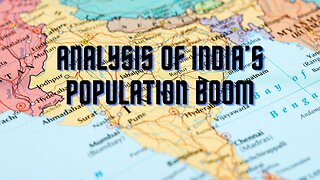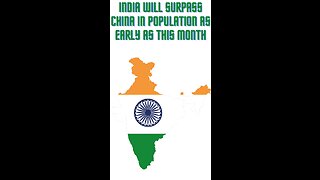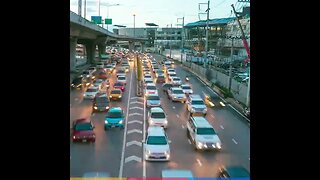Million Cities in India 1950-2035
This bar chart race shows urban agglomerations in India with over one million urban population, and urbanization in percentage and total urban population, from 1950 to projected in 2035.
The Eckert IV projection is used as map depiction.
The capital of India is New Delhi. Urban agglomeration data for Delhi National Capital Region (NCR) also include metropolitan area that is not restricted to state boundaries of National Capital Territory (NCT). I.e. contiguous suburban cities and towns, such as Faridabad, Gurgaon, and Ghaziabad.
Despite a high total urban population, the urbanization in percentage is relative low compared to many other countries for several reasons:
Large Rural Population: A significant portion of India's population still resides in rural areas, relying on agriculture and related activities for their livelihood. Despite urbanization trends, the rural population remains substantial.
Historical and Economic Factors: India has a long history of being an agrarian society. Economic development and industrialization, which drive urbanization, have occurred at a slower pace compared to some other nations. Many rural areas have not seen the same level of industrial growth that typically leads to urbanization.
Infrastructure and Urban Planning: Rapid urbanization requires extensive infrastructure and urban planning. India faces challenges in developing adequate urban infrastructure to support a larger urban population, including housing, transportation, water supply, and sanitation.
Government Policies: Policies and programs aimed at rural development, such as subsidies for agriculture and rural employment schemes, have helped sustain rural populations. These policies can slow the rate of rural-to-urban migration.
Social and Cultural Factors: Many people in India have strong cultural and familial ties to their rural communities. These ties can make people less inclined to migrate to urban areas, even when economic opportunities are more plentiful there.
Urban-Rural Disparities: The disparity in living conditions and opportunities between urban and rural areas can discourage urban migration. While cities offer more economic opportunities, they also come with challenges such as high living costs, congestion, and pollution.
While space constraints are also significant factors, they are intertwined with broader economic, social, and infrastructural issues that collectively influence the pace and nature of urbanization in India.
Countries like the United States, most of Europe, and Japan have much higher urbanization rates, often exceeding 80%. This is due to earlier industrialization, economic development, and smaller rural populations. India’s urbanization rate is comparable to some other developing nations but lags behind rapidly urbanizing countries like China, which has aggressively pursued urbanization through state policies and massive infrastructure projects. India’s urbanization is an ongoing process, and while it is less than 40% currently, it is expected to increase as the country continues to develop economically and infrastructure improves.
Data sources and projections: World Bank and UN
Music: Stellardrone - Pluto https://soundcloud.com/stellardrone/pluto
Data visualization created with flourish.studio https://flourish.studio
-
 1:59
1:59
The Last Capitalist in Chicago
1 year agoAnalysis of India’s Population Boom
6 -
 6:14
6:14
StateTrendsTV
10 months agoHighest INDIAN POPULATION states (TOP 10)
37 -
 5:06
5:06
Rumor has it
1 year agoWhat will being the world’s most populous country mean for India?
9 -
 0:57
0:57
The Last Capitalist in Chicago
1 year agoIndia will surpass China in population as early as this month
8 -
 1:32
1:32
B.C. Begley
1 year agoUN: India to surpass China as world’s most populous country by end of month
9 -
 2:31
2:31
Rumor has it
1 year agoIndia due to become world’s most populous country, 8 billion, Nov 14, 2022
2 -
 0:40
0:40
South Asian News Network
1 year agoIndia becomes the most populous country in the world
6 -
 1:45
1:45
Reuters
2 years agoIndia set to overtake China as most populous nation
3951 -
 23:08
23:08
R.C. Davis
1 year agoUnited Nations: India To Overtake China As The World's Most Populous Country - April 24, 2023
82 -
 1:39
1:39
Global Travel Services
1 year agoHigh Risk Emerging Markets - India
9